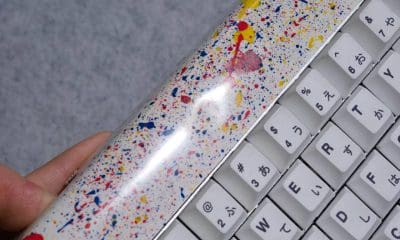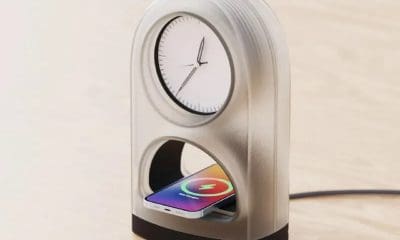Technology
Reviving the Past: Vintage Computer Designs Get a Modern Makeover


The Allure of Retro Computing
The realm of computing history is not just about groundbreaking technology but also about the fascinating designs that now seem alien to our contemporary gaze. These machines, once constrained by the technological limits of their time, now boast an otherworldly charm that's capturing the hearts of enthusiasts, especially as retro trends surge. Imagine a world where these classic designs are no longer just artifacts but functional tools, fitted with today's tech for everyday use. A prime example is the recreation of one of the earliest laptops into a usable modern device, assuming you're ready for a hands-on building experience.
A Nod to the Original Laptop
The Grid Compass, launched in 1982 and known for its pioneering clamshell design, is a celebrated icon in the evolution of portable computing. It gained fame for its use in NASA's Space Shuttle missions and among the US military. Its unique form factor, a robust black box with a lid half its length, set the stage for the laptop designs that followed. Now, the retro-inspired rasti.computer project breathes new life into this classic silhouette, offering tech aficionados the chance to construct a working modern laptop with a vintage soul.
DIY Meets Vintage Tech
The rasti.computer project is a testament to the growing retro wave, offering a blend of nostalgia and modern functionality. The heart of this do-it-yourself endeavor is a mainboard from a Framework 13 laptop, which can be sourced new or repurposed. As with any DIY project, expect to roll up your sleeves for some assembly, including a custom-designed keyboard. While the process is intricate, involving 3D printing and electronics soldering, the guidelines are openly available, allowing eager builders to gather the necessary components in anticipation of the full guide's release.
The Joy of DIY Achievement
Embarking on such a DIY project is no small feat, yet the satisfaction of crafting a unique piece of functional tech history is a reward in itself. The end result is a fully operational modern computer, albeit with a quirky wide and short 10.4-inch LCD screen and a rather hefty backside. This modern-day tribute to a computing pioneer is sure to turn heads and spark conversations, whether it's used at home or daringly displayed in public. For those who revel in the legacy of computing and tech innovation, this project is a bridge connecting past ingenuity with present-day creativity.


Hello! I’m Roger Jenkins, your go-to source at ReportingTheNews.com. I’m a USC graduate who combines journalistic precision with a Trojan’s passion. Based in sunny Los Angeles, my days are filled with more than just sunshine; they’re about capturing stories that resonate.
Beyond the newsroom, I’m an avid triathlete. Swimming, cycling, and running are more than just sports to me; they embody my commitment to discipline, focus, and a healthy dose of competition.
My love for travel takes me far and wide. Guadalajara, with its vibrant culture and unforgettable tacos, has a special place in my heart. I’m always searching for the next great story or a hidden culinary treasure.
At home, Nala, my energetic pet, is my constant companion. Together, we’re known in our neighborhood for our morning runs and evening strolls.
I’m driven by a belief in the power of storytelling to unite communities. Join me as we explore impactful narratives and stay updated with the latest news. You’ll also get a peek into my sports passions and travel escapades.
Want to get in touch? Follow me on Instagram for more insights and updates.













